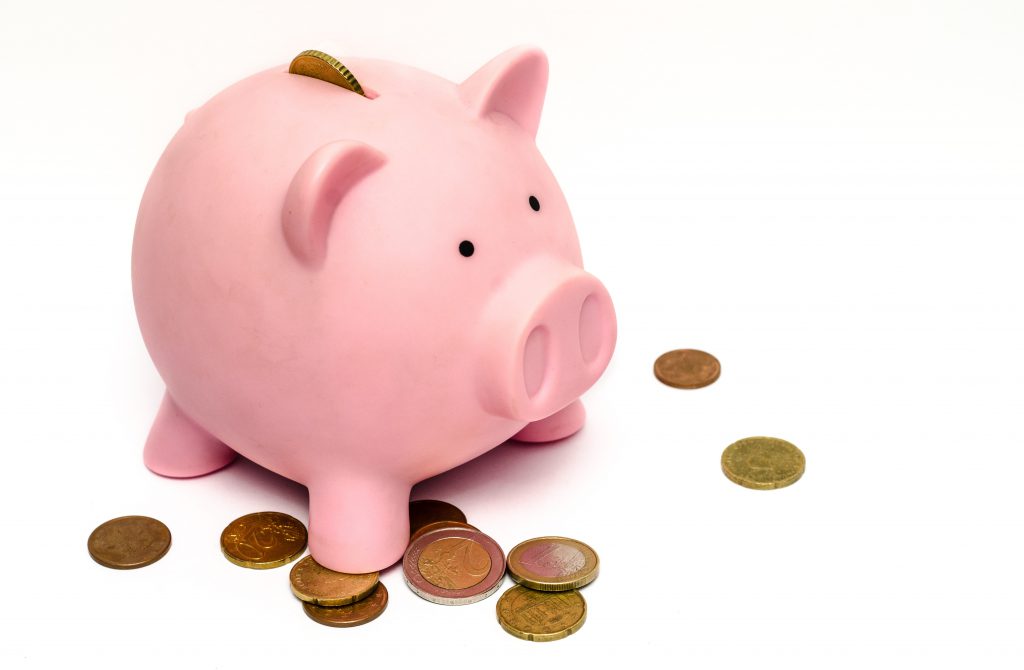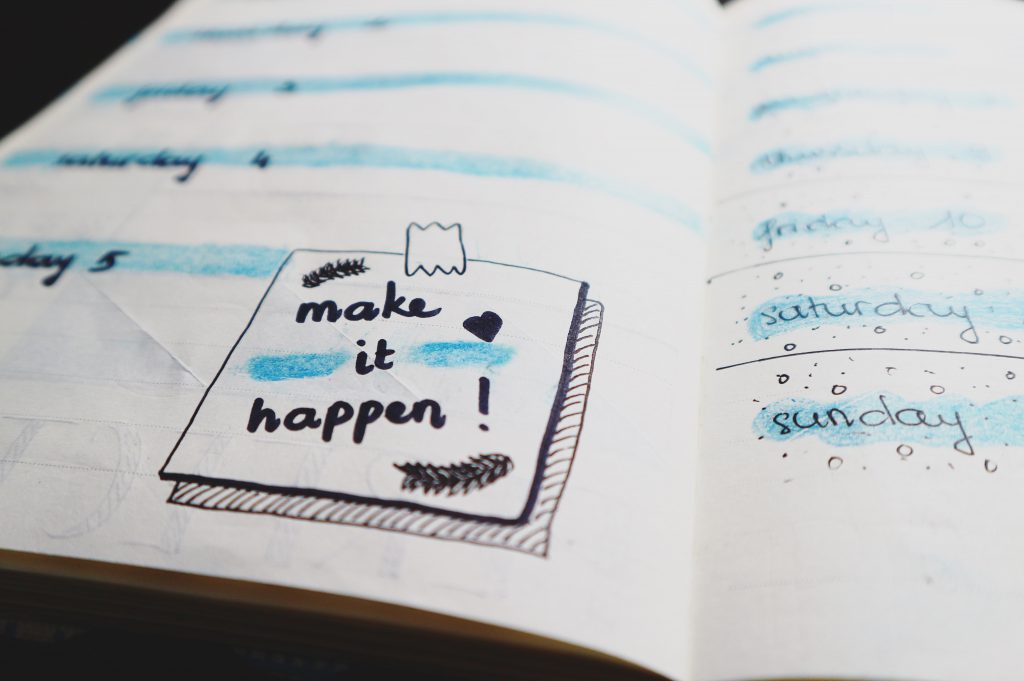
There’s nothing more invigorating than when seasons start to change, especially when you live in a country that gets cold and dreadful winters. Spring brings with it melting snow, warmer temperatures, blooming flowers, and lifted spirits. Not to mention, the desire to clean up your home and life to get it ready for a great summer.
Spring cleaning doesn’t just need to refer to physically cleaning out old clothes from your closet, and getting rid of those knick knacks collecting dust in your living room, it can also mean cleaning up and reorganizing your finances. Being on top of your finances and taking the time each year to reevaluate everything will help you be more organized and aware of your savings and financial situation. Here is the ultimate guide to help you spring clean your finances.
Getting started
Reevaluate or create a budget
To get yourself started on spring cleaning your finances, let’s talk about budgeting. If you already have a budget, pull it out to reevaluate. If you don’t, it’s time you get yourself one.
First things first, you are going to want to look at all your recurring expenses and income (after deductions). If you already have a budget, take a look at if anything has changed since you last put together a budget. Your priority should be to include the recurring expenses that are necessities, versus nice-to-haves. Examples of necessities would be:
– Your rent or mortgage payment
– Groceries
– Heat and electricity
– Water bill
– Phone and internet
– Car payments
– RRSP, or other retirement saving contributions
Once you have the recurring necessary expenses in your budget, evaluate how much you would like to spend on the nice-to-have expenses. These can include things like eating out, entertainment, shopping, memberships to gyms or other services, etc. Keep in mind your income that you have coming in. You should be able to breakeven and still have disposable income for other things like an emergency, or unexpected expenses that are bound to come up.
A good app to keep in mind when creating a budget, but also tracking your spendings and earnings, and sticking to your budget is Mint. There are also some other ones out there that can help you stay on track!
Budgets may seem time-consuming but it’s important that you have a plan in place that tracks your spending and saving habits.
Check on the state of your debt
Whether it’s student debt, credit card debt, or something else, it’s important to regularly check on the state of your debt to help you better plan a course of action. Spring is the perfect time to reevaluate your plan for paying off your debt, so here are a couple steps to get you started:
1. Look at how much you owe. List all of these balances, including interest rates in a spreadsheet.
2. Look at what the minimum payment is on each loan.
3. Evaluate how much you can afford to pay toward debt each month by incorporating it into your budget (see above).
To determine what debt to pay off first, you’ll want to look at the debt that has the highest interest. A good way to motivate yourself to get this paid off, because we all know how dreadful it is to pay debt, is incorporate rewards along the way when you’ve hit certain milestones. For example, once you hit the paying off half of your debt, you’ll treat yourself to a new outfit or a nice dinner at that place you’ve been wanting to try.
Remember, paying off debt is important, especially debt that is costing you more and more money the longer it goes unpaid, so if this means you need to re-evaluate those nice-to-have line items in your budget for a little bit, then do it!
Regroup on your finances
Look at this as your annual doctors check-up, but for your finances. Set aside some time to do a review and audit of all your accounts. This is a time to identify any opportunities to cut back and save money. Look at if there are any subscriptions or services you are regularly paying for that you don’t use, or look at it if there are options to lower these expenses. For example, there might be a better phone plan out there now since last year, or you might be able to change your monthly subscription to your favourite magazine to bi-monthly or quarterly. Reevaluate each expense and see if a) it’s necessary and b) if there is a way to make it lower.
Another thing to look at is what annual fees you’re paying for on your cards and accounts and determine if there are any better options. This might mean seeking out other options at different banks. Take a look at reward cards that are available from bank to bank as well because often these change throughout the year and there might be one out there that can give you valuable rewards like cash back or travel points.
Organize your paperwork
Guilty for hoarding paperwork of your finances that’s currently sitting cluttered on your desk or in the back of your closet? It’s time to take control of that ever growing pile this spring, but don’t get too carried away and just throw it all out.
Anything related to your tax return including notice of assessments, supporting documents and receipts should always be kept. You never know when you might need these for proof to the Canada Revenue Agency, or to help you file future tax returns.
If you are hoarding documents around any insurance claims, talk to your insurance company to determine if and how long you should keep the documents in case you need them down the road to substantiate a claim.
In terms of documents that you’ve been keeping from your bank or credit cards. If you can retrieve these documents easily online, there is no need to keep the paper copy too! However, before you throw them in the recycling bin, make sure to properly shred them as they likely contain personal information.
This is also a good time to change anything you can to electronic delivery versus paper, to avoid having this ever growing pile next year. Another good thing to do to make these documents more organized and easy to find is to download the electronic copies, organize them in a folder to your computer, and back them up! Then get rid of all the paper/clutter!

Things to consider
Set up auto-payments
One of the easiest ways to save or pay for bills is to set up automatic withdrawals and payments with your bank. For bills, this will ensure you never miss a payment and therefore never have to pay late fees. In terms of savings, this can help you stay on track with your savings goals, and also makes it easier to learn to live with less.
Auto-withdrawal contributions to your tax-free savings account (TFSA), your registered retirement savings plan (RRSP), or any other savings accounts you have. Even starting with a small amount each pay cheque or month can go a long way. By setting up auto-withdrawals you’ll find it much easier to learn to live without that money because you don’t even ever notice you have it. When you are putting in contributions yourself, it’s easy to convince yourself that you could be using that money for something else, especially if you have some big expenses to pay that month.
Prepare for tax season
So many people have no idea how to do their taxes and often dread when tax season comes around every spring. However, even though doing your taxes can seem like a headache, by preparing and organizing yourself and your finances, you can make the process a lot less painful.
First off, don’t wait until the deadline to file your taxes and to start getting things in order, if you are organizing yourself all year long then once tax season hits, all you’ll have to do is file your taxes versus rushing around trying to pull everything together. Here are the things you’ll need to collect to file your taxes:
– Notice of assessment from the previous year
– Employment income aka your T4 from each place of employment that year
– Investment income, known as T3s or T5s from your bank
– RRSP contribution receipts (they should send you an official income tax receipt)
– Receipts from any charitable contributions
– Family-related costs like child care expenses
– Information on your living expenses (first time homeowners can claim a certain portion of expenses)
Note that the above is for your personal income tax, however, if you run a business, you’ll want to ensure that you especially are keeping everything organized throughout the year as there are many more expenses you’ll need to keep in mind and include when you do your taxes.
Not only is it valuable to collect all the above, but learning how to actually do your taxes can be beneficial too as it can save you from paying for an accountant or other services to help you. A good place to turn for questions during the process is H&R Block they even often offer Twitter chats online where you can get the answers to your questions. Taxes can be confusing but it only takes a bit of educating to make yourself more aware and prepared for tax season.
 Think about insurance
Think about insurance
Insurance is incredibly important, and don’t be like all the people who didn’t think twice about insurance until something bad happened. It’s always better to be prepared than be stuck in a situation where you wish you would have looked into proper insurance. Accidents happen and there really is no way of preventing them, so being prepared for them can be critical.
Thankfully living in Canada we are blessed with basic health insurance, however, it doesn’t cover everything. If you aren’t insured for things like medication, dental, etc. through your current employer, you may want to consider looking into signing up and paying for health insurance elsewhere to ensure you have all bases covered. Some people would prefer to just pay these expenses up front, but if you or someone in your family gets really sick or in an accident, are you prepared? Something unexpected can throw your family into a ton of debt, so it’s better to safe than sorry.
What about tenant insurance? As a tenant you are responsible for any damage that happens in the building that may have been caused by you or your unit. For example, if a toaster starts a fire and damages the entire apartment complex, you may be liable for the damage to your unit and also the rest of the complex. What if there is a fire or water damage to all the goods in your apartment? Replacing them can add up. Tenant insurance can be valuable for renters as even though you hope that the worst case scenario doesn’t happen to you, you can’t always guarantee it won’t. Alternatively, if you own your house, you’ll want to ensure you have homeowners insurance that protects your assets.
Now let’s talk about life and disability insurance, even though it can be depressing to think about. Disability insurance is designed to replace a portion of your income if you become disabled and are unable to earn an income. A disability can be caused by illness, mental health, injury, etc. Life insurance protects the financial security of your loved ones if you pass away. There are different levels of life insurance, and although you might have basic life insurance through your benefits at work, it might not be enough to actually meet your needs, and can end when you leave your job.

Ways to save money
Negotiate your service providers
This is an area that no one really considers when it comes to cutting costs but can be valuable in helping you save money throughout the year. We all likely pay for regular services on a monthly basis like for our cable, internet, phone, etc. Although these service providers could lose you as a client and it would likely make no difference to their millions to billions of dollars of revenue each year, they still likely will do anything to keep you on board with them, especially if you’ve been a loyal customer.
Negotiating with your providers may seem like it’s not an option, given their prices are listed right on their websites, but you’ve thought wrong. In fact, ask around to your friends and family and you’ll probably notice almost all of them pay something different for these every day services. And with Canadian cell phone bills being some of the highest on the planet, negotiating can be the answer to some of your most expensive monthly expenses.
So here is how you approach it. For starters, scan the internet to find the lowest price. Look at other providers, see what they’re offering, see if your plan is better or worse than some of the new deals and plans on the market, and then call your service provider. Places like Bell Mobility actually have a customer loyalty line which are often the people in any service provider who can actually make magic happen for you. Give them a call, talk to them about what options are out there and see if there’s anything they can do to get you a better price. Don’t be shy about name dropping some of the competitor deals that may be better than what you have. You don’t necessarily need to threaten leaving them completely, or be prepared to yell, scream, or cry, it’s amazing what sometimes a simple call and conversation can do!
Alternatively, look into other services you can use in replacement of these. For example, do you really need cable in the age of streaming and Netflix? Probably not. Do you need a house phone when you have a cell phone? Probably not. Are you paying for unlimited internet but not coming close to needing that amount? Ask yourself some of these questions and look into different ways you can remove or lower the cost of these every day services. Even if at first glance you can’t tell what you can be saving, calling the provider and asking if there are any suggestions to save you money can be valuable!
Sell things you no longer need
Spring cleaning your finances also means spring cleaning your house. Take a look through your closets, drawers, and everything between, and start to shed some of that stuff you no longer use. Often our first thought is to throw out or donate these things we no longer use, but you may want to consider trying to sell some of the stuff first. This may sound crazy for some items, but the saying “one person’s junk is another person’s treasure” is definitely true. You’d be amazed at the things people will buy!
A good rule of thumb for determining when to get rid of something is based off of when the last time you used it was. If you can’t remember, then it’s likely that this item is adding no value to your life. To sell, or attempt to sell these items, there are a ton of websites, apps and Facebook groups nowadays that makes this so simple for people. Kijiji and Craigslist are definitely the most common, however, there are also apps like Carousell, and LetGo. Another option to is to look up Facebook groups for your city or area where people are selling things, and alternatively, there’s nothing wrong with a good old fashioned garage sale.

An emergency fund
We never know what the future has in store for us, and it’s always a good motto to be prepared for anything. An emergency fund is something that is extremely important, especially when you are taking care of more than just yourself. Having an emergency fund will not only allow you to know the answer to: “What would happen if XYZ were to happen?” but it also will allow you to be prepared for no matter what life brings.
Although saving for your next vacation or your retirement seems to be more of a priority to you, an emergency fund should actually be on the top of that list. An emergency fund can help shield you from borrowing money if an emergency strikes unexpectedly and in turn, prevent you from spiraling into debt.
So where do you start? Here are some steps to walk yourself through:
1) Decide how much you want to save and what’s realistic for you. There are lots of opinions out there on how much your emergency fund should actually have in it, but one of the most popular is three to six months of living expenses. However, at the end of the day, ask yourself what you would need in your bank account to make you feel secure if something was to unexpectedly arise.
2) Next look at your monthly expenses, which if you were following our steps on creating a budget at the beginning of this guide, this should be pretty easy to do. Knowing your monthly expenses, multiply that number by the number of months you decided on in step one. This is how much you’re going to want in your emergency fund.
3) Open an account that this money will be stashed in. You may want to chat with your bank to determine what’s the best for saving this kind of money, but make sure that it is easily accessible to you if an emergency was to come up.
4) Lastly, you’ll want to determine how much you can afford to save each month or pay cheque to pay cheque to get yourself to the number you determined in step two. Even a little bit can go a long way, but you also need to keep in mind how important this fund is, so don’t cut corners! You’ll thank us one day.

Plan for your future
Set goals
This wouldn’t be a proper article on getting your finances in check without talking about goal setting. Setting short-term, mid-term, and long-term financial goals is an important step towards becoming more financially secure. Plus, if you don’t have goals laid out and aren’t working towards anything specific, you’re likely to spend way more than you should. Which in turn, won’t be very helpful if you get an unexpected bill, expense, or if you ever want to retire. Annual financial planning gives you a chance to review your goals and update them when necessary, as well as review your progress year over year.
Short-Term Goals:
Setting short-term financial goals can give you a good boost in confidence and motivation to achieve those larger goals you set out for yourself. For creating short-term goals, you’re going to want to look at some of the other sections of this guide. Here are some ways to start setting those short-term goals.
Set a budget: For starters, you’ll want to establish a budget. Your budget is what will help you identify where you can save money, and what you can or can’t afford.
Create an emergency fund: See where the rest of this guide is coming full circle? Putting money aside in your emergency fund is a great short-term goal because once you have enough in this fund to feel secure, you can start saving money in other places for other things until it’s time to reevaluate this fund.
Pay off credit cards: Paying off credit card debt is extremely important, not only for your credit score, but also because it’ll start collecting interest, making reaching your goals much more challenging. Start by paying off the cards with the highest interest rate and work your way from there.
Mid-Term Goals:
Once you’ve created your budget, emergency fund and paid off your credit cards (or made a dent in them). You will begin to focus on your mid-term goals. These goals are a good bridge between your smaller goals and your bigger ones.
Insurance: As mentioned previously, if you have a spouse or family that depend on you, it’s important to look into life and disability insurance. You’ll pay into this so you’ll need to figure out how this fits into your budget but it is so important to have!
Pay off student loans: If you went to a post-secondary institution you are probably one of the many who have student loans. Student loans thankfully usually have a lower interest to them, however, the best option is to pay them off completely to get rid of that burdon and start saving for other things. Set a goal to increase your payment, or to pay off a certain amount quarterly and really focus on reaching those goals.
Think about your future: While setting mid-term goals, you’ll also want to begin to think ahead to your future. Do you want to eventually buy a house or apartment, do you want to renovate? Save for your kids university education? The list goes on. Starting to wrap your head around what you want to save for, and how much you’ll need to save will help you breakdown what seems like a big goal, into smaller more manageable goals.
Long-Term Goals:
The biggest long-term goal is usually to save money for retirement, which if you’re young and at the start of your career it can be hard to even fathom setting aside money for this, but the sooner you start, the sooner you can retire. The rule of thumb for savings is 10%-15% of every pay should go into your retirement savings (more details in next section). However, to get the most accurate number for you, you’ll need to determine how much you’ll actually need when you retire. Here’s how to do that:
1) Estimate your retirement needs. This means looking at your living expenses and what you image they’ll be by the time you retire. To start, look at your budget you have now, and factor in things like health care expenses, etc. that may arise naturally with old age.
2) Look at the income that you will receive. Note that if you have a spouse you’ll want to factor them in too. This includes social security, retirement plans and pensions you might have.
3) Estimate your assets. Figure out what you currently have and are saving on a yearly basis now. Take a look at your income from step two, and determine if this amount would cover the remaining amount of your expenses.
Savings accounts
Now that we’ve chatted about the different types of goals for your savings that you should lay out, it’s important to chat about where you are keeping this money you are saving and to understand the difference between some of your options.
First off, you have the plain old regular savings account that you probably are most familiar with. You’ll pay the regular bank fees at your bank for this account. You won’t earn or lose any money or have your money sitting there, and it’s easily accessible to you. This type of account is great if you are short-term saving for something, like for example, a vacation, new furniture, or something that you’ll want the money readily available to you sooner than later. However, it really offers no benefits in comparison to the other savings accounts we’ll discuss next.
A Tax-Free Savings Account, most commonly referred to as a TFSA can be useful for saving your money, however there are very strict rules in terms of withdrawing and depositing your money, and in turn, if you don’t follow these rules you can end up in trouble with the Canadian Revenue Agency. Saying that, there are a ton of benefits of having a TFSA, and the main one is that contributions to this account are not deductible for income tax purposes. Therefore any amount contributed, plus any income earned in the account is generally tax-free, even if you take money out.
Lastly, a Registered Retirement Savings Plan (RRSP) is used to save for your retirement, or alternatively, you can withdrawal this cash for other major investments like buying a house (restrictions apply). The best part of this type of account is that any income that goes into an RRSP is exempt from tax, as long as the funds remain in the account. Canadian’s can save significantly on their taxes each year by contributing to their RRSP which makes it a great option for those long-term goals!
As you can see, there are a ton of things you can do to spring clean your finances. By starting or re-evaluating your budget, taking a hard look at your debt, and organizing your paperwork and life, you’ll already be on the right track. Then the next step is to think through the things you may have never thought about or procrastinate on like setting up auto-payments, ensuring you have the right insurance for you and your family, and preparing all year for tax season instead of right before the deadline. You might want to also think about negotiating with your service providers, selling things you don’t need and setting up an emergency fund when it comes to ways to save and be prepared. Lastly, having goals and saving for your future is important, so stop procrastinating on that and actually set them.
Although a lot of these things may seem daunting when you haven’t before considered any of them when it comes to your finances, by taking the time to get things in order, you’ll set yourself up for lifelong security and confidence in your finances. Everyone wants to not have to worry about money, so this spring, before you get distracted with the summer fun, work yourself through this guide to make sure you come out on top.
To learn more about GoDay and our payday loans, check out these FAQs.




